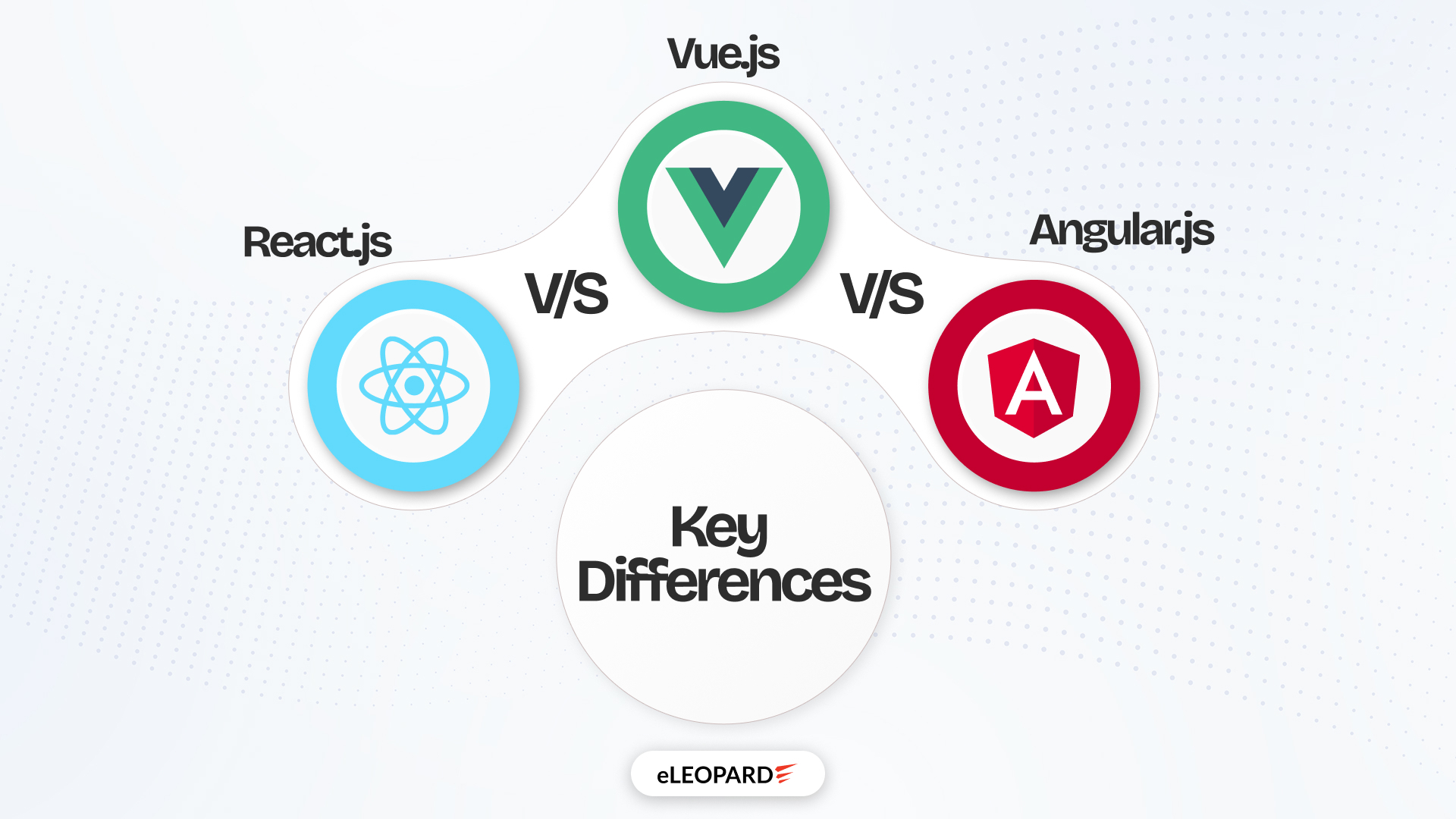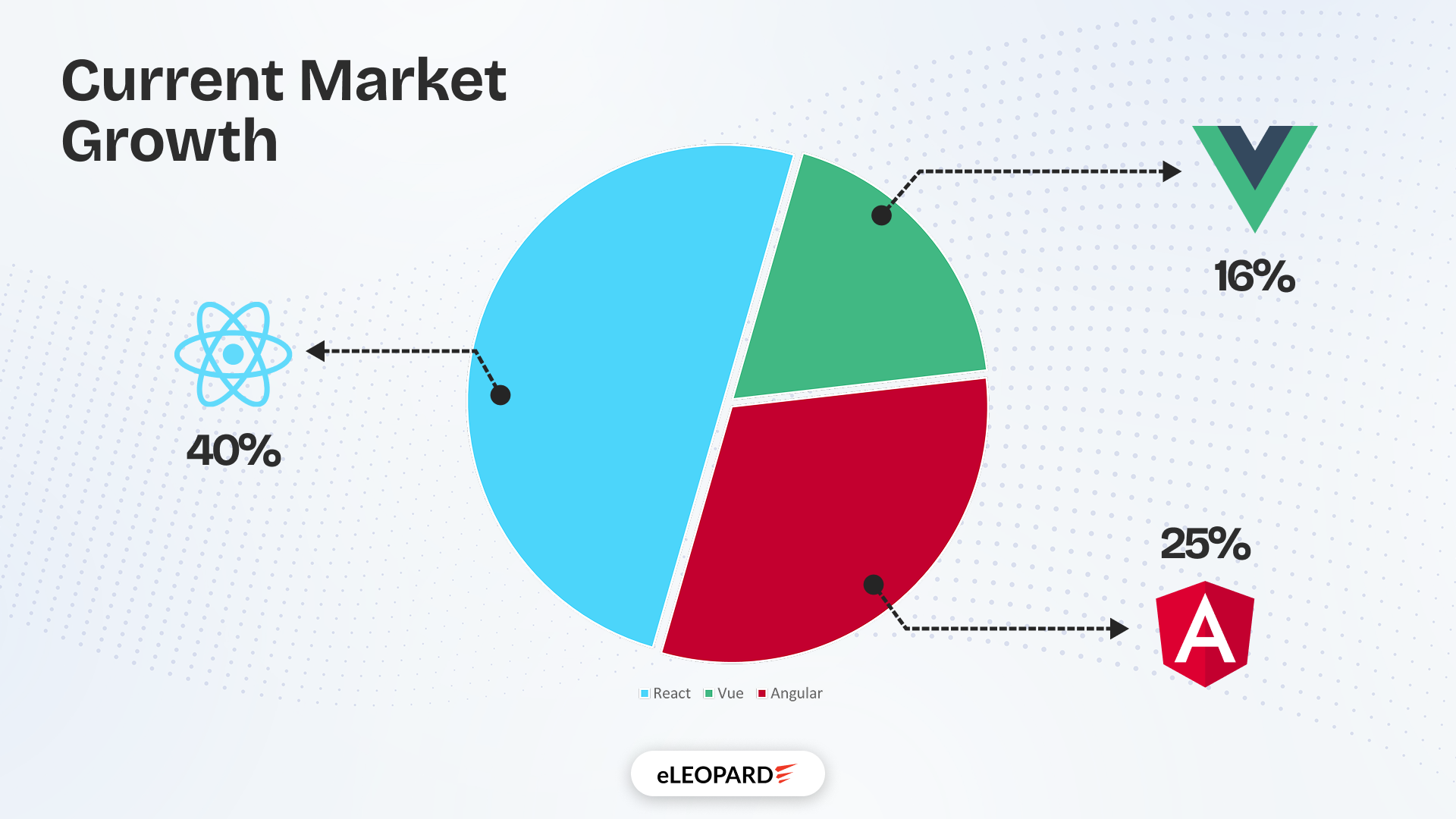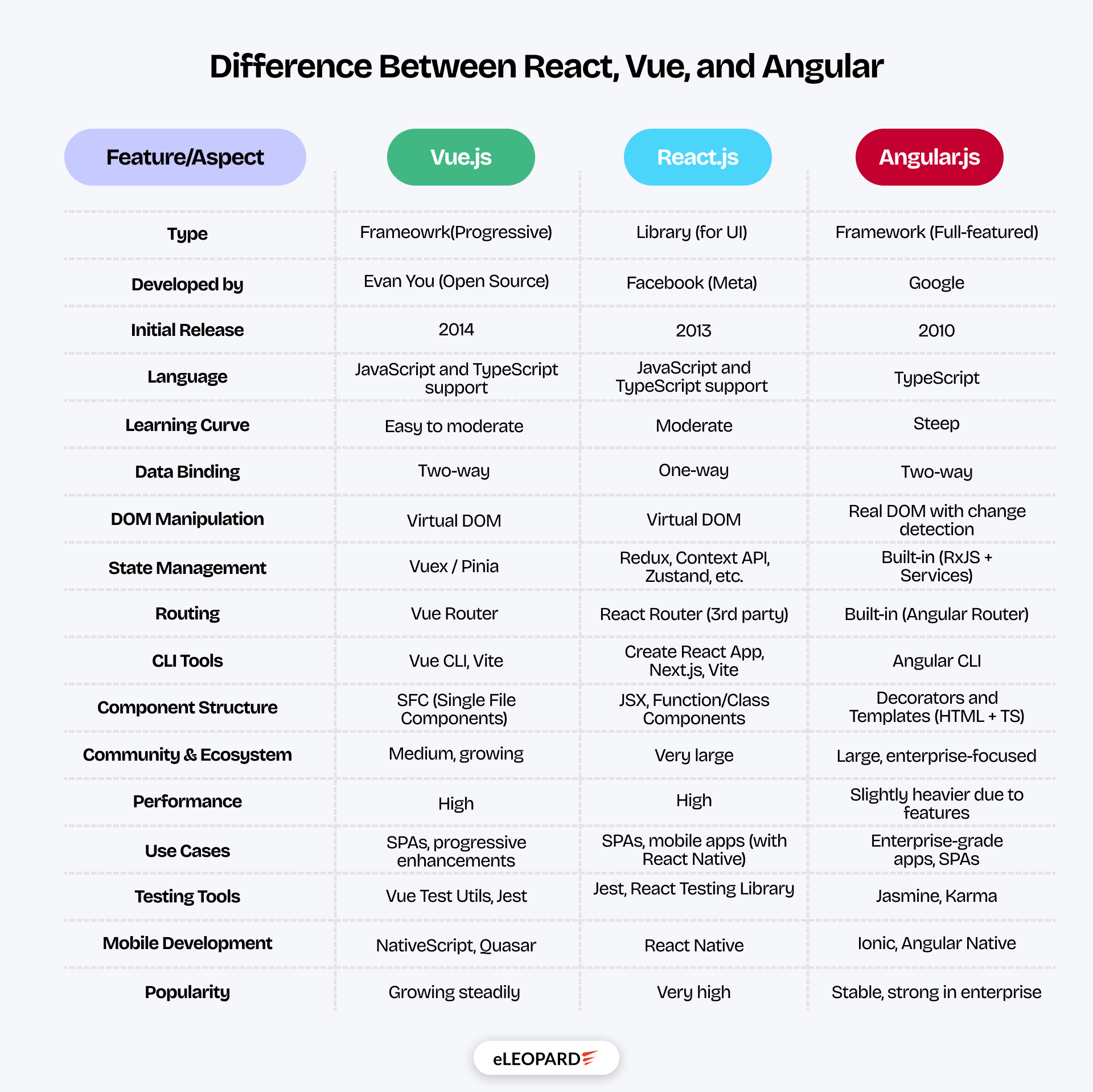In 2025, frontend web development is more diverse and dynamic than ever. With an array of powerful tools at a developer’s disposal, choosing the right framework or library for building modern web applications can be a daunting task. Among the most popular choices—React, Vue, and Angular—each has its unique strengths, philosophies, and approaches to solving complex development challenges. While React leads the charge with its widespread adoption and massive ecosystem, Vue continues to shine for its simplicity and flexibility, and Angular holds its ground as the go-to solution for large-scale enterprise applications.
As the demand for faster, more interactive, and scalable web applications increases, understanding the key differences between these technologies is essential. Whether you’re building a small-scale project or a massive enterprise application, knowing the pros and cons of React, Vue, and Angular can help you make a well-informed decision.
This article dives deep into the characteristics of each, offering a comprehensive comparison of their features, advantages, disadvantages, and the future outlook of these powerful tools.
Market Growth of React vs Vue vs Angular in 2025
As of 2025, React continues to hold the dominant position in the frontend development landscape. According to recent data from State of JS 2024, React accounts for nearly 40% of all frontend projects, and its ecosystem continues to grow exponentially. Major corporations like Facebook, Instagram, Airbnb, and Netflix rely on React to power their applications.
Vue, on the other hand, has seen substantial growth, particularly in the last few years. With its simplicity and flexible architecture, Vue has carved out a significant user base in Asia and among smaller to mid-sized startups. Its market share is currently around 16%, but it continues to gain momentum thanks to its smooth learning curve and growing community.
Angular, a comprehensive framework developed by Google, remains a strong contender with 25% of the frontend market share. It is commonly adopted for large-scale, enterprise-level applications, where the benefits of its full-fledged structure and strong typing in TypeScript offer long-term maintainability and scalability.
In short, React leads the market, Vue is growing quickly due to its simplicity and progressive adoption, and Angular remains a solid choice for large-scale enterprise applications.
What is React?
Key Features of React
- Component-Based Architecture: React applications are built using components, which are reusable, isolated chunks of UI logic. This makes it easier to manage complex applications.
- Virtual DOM: React uses a virtual representation of the DOM to optimize UI rendering. Instead of updating the actual DOM with each change, React updates the virtual DOM and then efficiently syncs it with the real DOM, leading to faster rendering.
- Declarative Syntax: React uses a declarative approach to UI building, meaning developers describe how the UI should look for different states, and React takes care of the rendering logic.
- React Hooks: Introduced in React 16.8, Hooks allow for state and lifecycle management in functional components, enhancing code readability and reusability.
- Rich Ecosystem: React has a large and diverse ecosystem of libraries, tools, and frameworks (like Next.js and React Router) that extend its functionality.
What is Vue?
Key Features of Vue
- Reactive Data Binding: Vue uses a two-way data binding mechanism, allowing automatic synchronization between the model (data) and view (UI), making state management easier.
- Component System: Like React, Vue also encourages building applications using components, but Vue’s syntax is more straightforward, making it a popular choice for beginners.
- Vue CLI and Vue Router: Vue CLI is a powerful tool for setting up projects, and Vue Router offers a smooth, integrated solution for managing routing in Vue applications.
- Vuex for State Management: Vue offers a centralized store (Vuex) to handle state management, making it easier to manage and debug complex state logic.
- Single-File Components: Vue’s single-file components encapsulate the template, script, and styles in one file, providing a clear and organized structure for application development.
What is Angular?
Key Features of Angular
- Two-Way Data Binding: Like Vue, Angular provides two-way data binding, which ensures the model and view are always in sync, reducing the need for manual DOM manipulation.
- Dependency Injection: Angular’s built-in dependency injection system helps manage service instances, making the application easier to test, scale, and maintain.
- RxJS for Reactive Programming: Angular leverages RxJS, a library for reactive programming, to handle asynchronous data streams, which is ideal for complex real-time data handling in applications.
- TypeScript: Angular is built with TypeScript, offering static typing, interfaces, and decorators. This enhances development productivity and reduces bugs, especially in large applications.
- Angular CLI: Angular CLI is a powerful command-line interface tool that automates many development tasks, such as testing, building, and deploying Angular apps.
Difference Between React, Vue, and Angular
1. Learning Curve
- React: React has a moderate learning curve. The library itself is simple, but to build a full-featured application, developers need to familiarize themselves with various supporting libraries (e.g., React Router, Redux).
- Vue: Vue is often considered the easiest to learn, especially for developers familiar with HTML, CSS, and JavaScript. Its documentation is user-friendly, and its gradual adoption allows for an easy learning curve.
- Angular: Angular has the steepest learning curve due to its comprehensive nature. It’s a full framework, meaning developers need to learn a lot of built-in tools, concepts like dependency injection, and TypeScript.
2. Performance
- React: React offers excellent performance, thanks to its Virtual DOM that minimizes direct manipulations of the actual DOM.
- Vue: Vue’s reactivity system and Virtual DOM make it equally performant, especially for small to medium-scale projects.
- Angular: Angular is a bit heavier than React and Vue, but it offers good performance for large-scale applications. However, its two-way data binding can be slower in complex scenarios.
3. Ecosystem and Community Support
- React: React has the largest ecosystem and an enormous community, making it easy to find libraries, tools, and support.
- Vue: Vue’s ecosystem is smaller but rapidly growing. It has strong community support, particularly in Asia, and the core team is highly active.
- Angular: Angular has strong enterprise-level support, particularly for large applications, but its ecosystem is not as vast as React’s.
4. Development Speed
- React: React allows for faster development, but you need to integrate third-party libraries for routing, state management, etc., which can slow things down.
- Vue: Vue offers a quick development process thanks to its simple API, integrated solutions, and powerful CLI.
- Angular: Angular’s development speed is slower because of its complex setup, but for large-scale applications, its out-of-the-box features reduce the need for external dependencies.
React Advantages and Disadvantages
Advantages
- Flexible and component-based architecture.
- Large community and robust ecosystem.
- Strong corporate backing (Facebook).
- Rich support for third-party libraries and tools.
Disadvantages
- Requires third-party libraries for full functionality.
- JSX syntax can be difficult for newcomers.
- Frequent updates can introduce breaking changes.
Vue Advantages and Disadvantages
Advantages
- Easy to learn and integrate into projects.
- Comprehensive documentation and tools.
- Lightweight and flexible.
- Ideal for small to medium-sized applications.
Disadvantages
- Smaller ecosystem compared to React and Angular.
- Less corporate backing can impact long-term stability.
- Limited large-scale use cases in enterprise environments.
Angular Advantages and Disadvantages
Advantages
- Complete, opinionated framework with everything needed for large-scale apps.
- Strong support for TypeScript.
- Built-in features like routing, HTTP client, and state management.
Disadvantages
- Steep learning curve.
- Performance can suffer in large, complex applications.
- Verbose syntax and boilerplate code.
Future of React, Vue, and Angular
Looking ahead to 2025 and beyond, React is expected to maintain its lead due to its versatility, large ecosystem, and ongoing support from Facebook. Vue will continue to gain popularity among smaller teams and startups because of its simplicity, while Angular’s presence will remain strong in large enterprise environments that benefit from its robust framework and TypeScript integration.
However, all three technologies are constantly evolving, and the decision to use one over the other should ultimately depend on the specific requirements of the project—whether it’s performance, scalability, or ease of use.
Conclusion
Choosing the right frontend framework depends on several factors such as the project’s scale, the team’s familiarity with the technology, and specific project requirements. React remains the most widely adopted, Vue shines in terms of simplicity and flexibility, and Angular stands strong for large-scale, enterprise-level applications. As 2025 unfolds, all three frameworks will likely continue to evolve, offering developers even more powerful tools and capabilities to create innovative web applications. Ultimately, understanding the strengths and weaknesses of each framework will allow developers to make an informed choice for their next project.
Contact us for more information and build your dream project with the eLEOPARD team!



